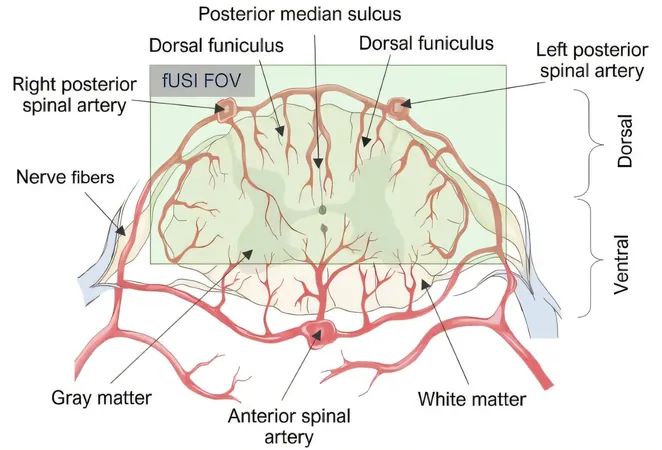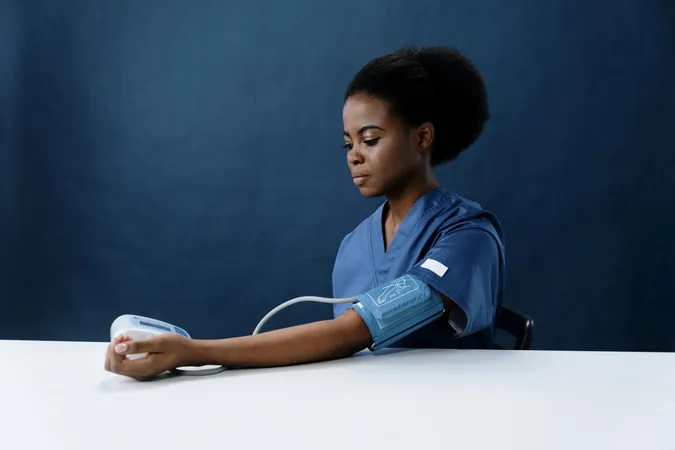
Breakthrough Study Reveals How the Spinal Cord Controls Bladder Function
2025-07-29
Author: Yu
Imagine dealing with a condition that affects over 33 million Americans, deeply impacting their quality of life and mental well-being. That's the harsh reality of urinary incontinence. But a groundbreaking study from the University of Southern California (USC) may hold the key to understanding and reversing this debilitating issue.
Decoding Bladder Control: The USC Breakthrough
Researchers from USC's Viterbi School of Engineering and Keck School of Medicine have made significant strides in revealing how our spinal cord governs the bladder-emptying mechanism. This discovery could pave the way for revolutionary treatments that empower patients to regain control of this essential function.
Published in the prestigious journal Nature Communications, this pioneering study was led by Charles Liu, director of the USC Neurorestoration Center, and Vasileios Christopoulos, assistant professor at the Alfred E. Mann Department of Biomedical Engineering.
The Spinal Cord: An Uncharted Territory
The spinal cord plays a crucial role in regulating vital bodily functions, including bladder control. However, studying it in humans has proven challenging due to its small size and protective bone structure. Traditional imaging techniques like fMRI, commonly used to examine the brain, are not effective for the spinal cord.
Christopoulos remarked, "For too long, the spinal cord has been an overlooked aspect of neuroscience, often treated merely as a conduit between the brain and the body." The urgent need for innovative approaches to study this vital area has never been clearer.
Functional Ultrasound Imaging: A Game Changer
To tackle these challenges, the USC team utilized a groundbreaking technique called functional ultrasound imaging (fUSI). This minimally invasive method enabled them to observe real-time blood flow changes in the spinal cord during bladder filling and emptying.
A unique opportunity arose when the researchers collaborated with patients undergoing spinal cord stimulation surgery for chronic back pain. This allowed for a safe window to gather fUSI data while simulating bladder activity.
Revolutionary Findings: Linking Spinal Cord Activity to Bladder Pressure
The study revealed specific spinal cord regions closely correlated with bladder pressure changes. Christopoulos noted, "For the first time, we can identify spinal cord activity that indicates bladder fullness or urgency to urinate. This opens exciting possibilities for real-time monitoring and intervention."
The researchers discovered that some spinal regions increased activity with rising bladder pressure, while others showed decreased activity, indicating a complex interplay of excitatory and inhibitory networks vital for bladder control.
A New Hope for Millions
With decades of combined experience in neuromodulation and restorative strategies, Liu and Christopoulos aim to provide patients with a renewed sense of control over their autonomic functions, which many take for granted. Christopoulos emphasized that restoring bladder control is often a higher priority for patients than motor functions.
Urinary incontinence can lead to severe complications, including urinary tract infections, which increase the risk of hospitalization due to unnoticed infections. This research not only sheds light on the complexities of bladder control but also indicates a promising pathway for treatments that could revolutionize care for individuals with neurogenic bladder issues.
The ability to decode bladder pressure signals from spinal cord activity suggests we may soon be able to develop personalized spinal cord interfaces. These could alert patients about their bladder status, significantly enhancing their quality of life.
A Step Toward Precision Medicine
As Liu stated, "Understanding a process is the first step towards improving it." This research signifies a remarkable leap forward, opening doors for targeted interventions that blend innovative neuromodulation techniques with pharmacotherapy—potentially transforming bladder management for millions globally.




 Brasil (PT)
Brasil (PT)
 Canada (EN)
Canada (EN)
 Chile (ES)
Chile (ES)
 Česko (CS)
Česko (CS)
 대한민국 (KO)
대한민국 (KO)
 España (ES)
España (ES)
 France (FR)
France (FR)
 Hong Kong (EN)
Hong Kong (EN)
 Italia (IT)
Italia (IT)
 日本 (JA)
日本 (JA)
 Magyarország (HU)
Magyarország (HU)
 Norge (NO)
Norge (NO)
 Polska (PL)
Polska (PL)
 Schweiz (DE)
Schweiz (DE)
 Singapore (EN)
Singapore (EN)
 Sverige (SV)
Sverige (SV)
 Suomi (FI)
Suomi (FI)
 Türkiye (TR)
Türkiye (TR)
 الإمارات العربية المتحدة (AR)
الإمارات العربية المتحدة (AR)